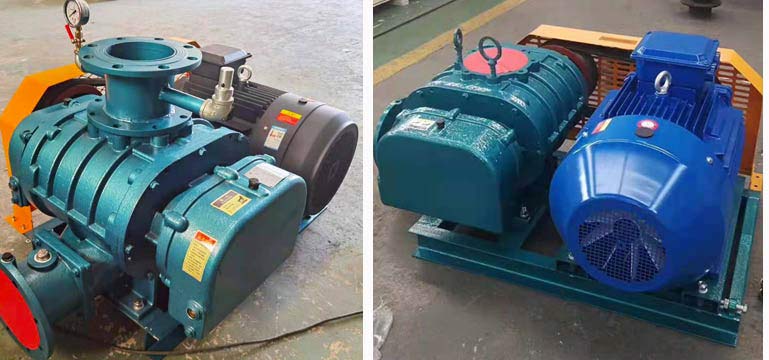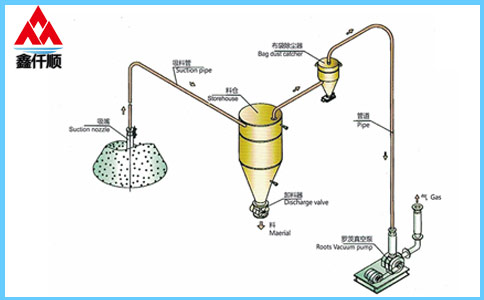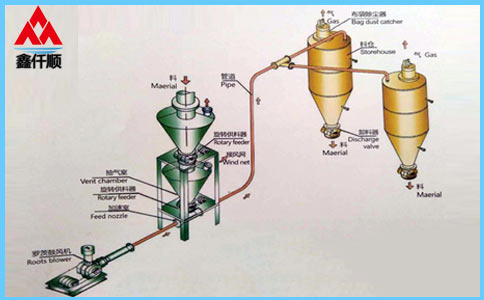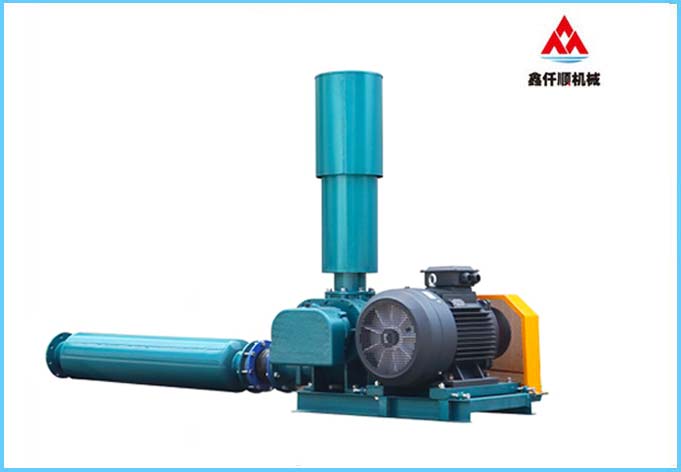The seal of Roots blower includes three parts, namely, the drive shaft extension, the tail oil seal of the bearing pedestal and the shaft seal of the wall panel. The shaft seal at the wallboard part is mainly used to prevent gas leakage. The other two parts have requirements for sealing gas in addition to preventing oil leakage. Generally, the structure with sealing gas as the main part is called gas sealing device, and the one with oil sealing function is called oil sealing device.
Labyrinth seal, packing seal, expansion ring seal and mechanical seal are commonly used in the shaft sealing device of Roots blower wall panel; The commonly used sealing device of driving shaft extension is skeleton oil seal group or mechanical seal. The oil seal at the rear of the bearing seat is usually sealed by oil return groove structure or skeleton oil seal group.
1. Labyrinth seal
Labyrinth seal is a non-contact dynamic seal that uses a channel composed of fluid flowing through a series of throttling gaps and expansion cavities to make the working medium produce throttling effect to limit leakage. Labyrinth seal is widely used in the shaft seal of the wallboard of Roots blower. The sealing mechanism can be simply explained as that the fluid passes through many zigzag channels and has great resistance after multiple throttling, making it difficult for the fluid to leak, so as to achieve the purpose of sealing.
Its advantages are not limited by speed and temperature, simple structure, convenient maintenance and long service life. Properly increasing the number of sealing teeth can be used for sealing high-pressure gas; If the seal is well processed and assembled, it will not break down in operation and does not need to be replaced frequently. The main disadvantage is that the machining accuracy of sealing parts is required to be high.
Due to the small seal clearance, friction and wear will occur when the machine is in poor operation, thus reducing the sealing performance. This kind of seal is generally suitable for air transportation. Its use is limited when transporting toxic, flammable and explosive gases. This type of seal is generally used for wall panel sealing of standard Roots Drum&Phoenix Blower.
2. Packing seal
Packing seal is a type of seal that uses packing to fill the leakage channel and prevent leakage. The packing seal is widely used because of its simple structure, convenient assembly and disassembly, and low cost. In the packing seal structure of Roots blower, packing, shaped polytetrafluoroethylene packing and skeleton oil seal group packing are commonly used. Because this type of seal is a contact type seal, it is easy to cause wear of the shaft and the oil seal lip or the contact part of polytetraethylene packing. Because of its simple structure, convenient assembly and disassembly, low cost, good sealing effect, and low requirements for working environment and maintenance, it has been widely used in fertilizer plants and other industries.
3. Expanding round seal
The expansion ring seal is to place a number of elastic rings in the seal groove. Because of the elastic force of the expansion ring itself, its outer circle is closely attached to the shell, and there is no relative rotation between the outer diameter of the expansion ring and the shell. Gas can only leak downstream through the gap between the expansion ring and the annular groove. During operation, the expansion ring is closely attached to the downstream end face of the annular groove under the effect of the gas pressure difference on both sides. The high-pressure gas entering the gap fills the back gap space, further strengthening the seal between the outer circle of the expansion ring and the inner hole of the seal seat, and the remaining leakage channel is only the notch of the expansion ring. Because the gap between the cuts is very small, and the slices are installed in a staggered manner during installation, only a few of them go out after several rings of expansion are sealed.
If a sealing gas sealing device is added, the sealing effect will be better. Because this type of seal is a contact type seal, the sealing effect is good, but it needs to be lubricated with grease when using. The newly developed expansion ring made of special materials can be used without grease. The shaft seal of the wallboard part adopts the above three sealing forms. When the wallboard structure is open, the transported gas will not leak into the oil tank, but may leak into the atmosphere. The lubricating oil will not leak into the casing. When a closed wall panel structure is used, the conveyed gas may leak into the oil tank. As a vacuum pump, lubricating oil may leak into the casing when vacuumizing.
I believe that after reading the above, you should have a better understanding of the sealing method of Roots blower. I hope it will be helpful to you.
Text term label: Roots blower
Link to this article: //wuhanzhcs.com/html/news/n02/602.html










